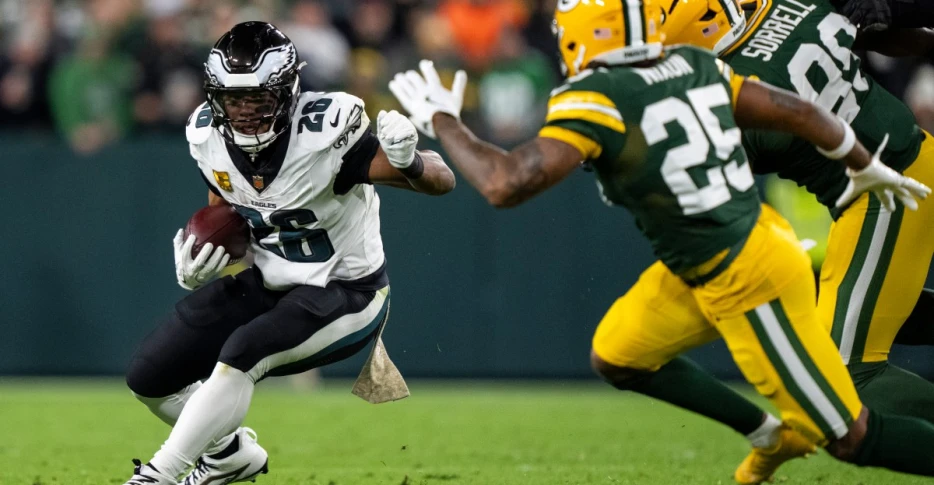
 Acme Packing Company
Acme Packing Company
The Green Bay Packers’ defense, again, did more than enough to win the game. Against the defending Super Bowl champion Philadelphia Eagles, whom they held to just 10 points, they found ways to stop a high-powered offense led by Saquon Barkley and AJ Brown. Unfortunately, the offense did not hold up its end of the bargain; the game ended 10-7, even with the defense getting the ball back to the offense twice in the final two minutes.
The Packers defense held Barkley to just 2.7 yards per carry and held AJ Brown to two catches for 13 yards. Barkley did have a 20+ yard run wiped out due to holding, but even that likely would have been a limited gain because it seemed like the defenders were in good position on their pursuit angles to limit his run.
Jalen Hurts only completed two passes over 20+ air yards, and one was an underthrown pass to Devonta Smith that he ripped away from Evan Williams before scoring. The defense even forced a turnover on the Eagles’ first drive that the offense could do nothing with.
To limit Barkley’s effectiveness, defensive coordinator Jeff Hafley had to figure out when to call run defenses against the Eagles in certain situations. On running downs, the defensive call would often drop safeties Xavier McKinney and Evan Williams into the box from depth as the B-gap run fitter with the defensive end pushed wide.
Hafley’s system is similar to Robert Saleh’s (49ers defensive coordinator) in that the defensive ends are box players who will not play heavy into the B-gap a majority of the time, preferring instead to have linebackers and safeties fit those gaps. They can do this out of cover-3 or quarters. The only difference post-snap is where the safeties would end up in pass coverage.
From cover-3, the run fits become 1-gap, where each defender in the front has one gap responsibility. The safety becomes a box player. Where he fits the run is up to the play call. The safety becomes a force or fold player. On a run to the safety’s side, he becomes the force player on the edge to turn the ball back inside. On a run away, he becomes a fold player filling any open gap. The rest is play call dependent, and these are not hard and fast rules.
On the first drive of the game, we get a good example of this, where Williams’s late rotation makes him the secondary force player down in the box after the motion pushes Barkley back inside to help as he fills the C-gap.
The Eagles are running a wide zone out of pistol to the strong side. In the run fits, Williams is the C-gap fitter with Isaiah McDuffie setting a hard edge with outside leverage on the tight end to force the ball carrier back inside on his outside zone read.
Williams plugs the C-gap and flashes in it when Barkley gets there, turning him back inside to...